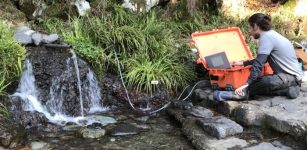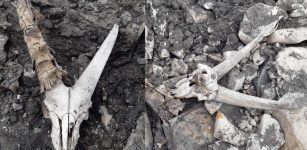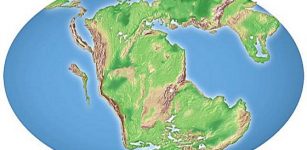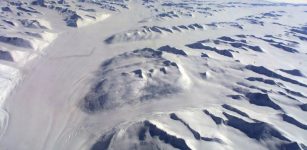Hundreds Of Millions Of Trees Are Growing In Sahara – Surprising Satellite Images And AI Reveal
Cynthia McKanzie – MessageToEagle.com – Most of us think Sahara is just a desert, but this is not the case. Sahara is much more than Sahara golden dunes and scorched rocks.
Using a combination of detailed satellite imagery provided by NASA and artificial intelligence (AI) scientists have just learned there are hundreds of millions of trees in what an area they thought was more or less dryland.
This is the first time that trees across a large dryland region have been counted and the results mark the beginning of a new scientific era.

Credit: Martin Brandt
In an area of West Africa 30 times larger than Denmark, an international team, led by the University of Copenhagen and NASA researchers, has counted over 1.8 billion trees and shrubs. The 1.3 million km2 area covers the western-most portion of the Sahara Desert, the Sahel, and what are known as sub-humid zones of West Africa.
“We were very surprised to see that quite a few trees actually grow in the Sahara Desert, because up until now, most people thought that virtually none existed. We counted hundreds of millions of trees in the desert alone. Doing so wouldn’t have been possible without this technology,” asserts Assistant Professor Martin Brandt of the University of Copenhagen’s Department of Geosciences and Natural Resource Management, lead author of the study’s scientific article, now published in Nature.
The Role Of Trees In The Global Carbon Budget
We do know that Sahara, which is the world’s largest desert covers one-third of the African continent was in ancient times, some thousand years ago this vast area was fertile grassland.
Then something happened and the Green Sahara turned into a desert. There is still so much we do not know about what is hidden beneath the sand. Scientists have discovered three ancient river systems, now buried, may have created viable routes for human migration across the Sahara to the Mediterranean region about 100,000 years ago.
The discovery of fish in the Sahara can help scientists to understand why this once a grassland ecosystem turned into a desert.
Now that scientists know there is a huge number of trees they can improve their knowledge of the global carbon cycle.
New knowledge about trees in dryland areas like this is important for several reasons, according to Martin Brandt. For example, they represent an unknown factor when it comes to the global carbon budget:
“Trees outside of forested areas are usually not included in climate models, and we know very little about their carbon stocks. They are basically a white spot on maps and an unknown component in the global carbon cycle,” explains Martin Brandt.

The red rectangle marks the area where the trees were mapped. Credit: University of Copenhagen
Furthermore, the new study can contribute to a better understanding of the importance of trees for biodiversity and ecosystems and for the people living in these areas. In particular, enhanced knowledge about trees is also important for developing programs that promote agroforestry, which plays a major environmental and socio-economic role in arid regions.
“Thus, we are also interested in using satellites to determine tree species, as tree types are significant in relation to their value to local populations who use wood resources as part of their livelihoods. Trees and their fruit are consumed by both livestock and humans, and when preserved in the fields, trees have a positive effect on crop yields because they improve the balance of water and nutrients,” explains Professor Rasmus Fensholt of the Department of Geosciences and Natural Resource Management.
Using advanced satellite technology in combination with AI has been a success and the project can continue. The next step will be to expand the count of trees to a much larger area in Africa. And in the longer term, the aim is to create a global database of all trees growing outside forest areas.
Written by Cynthia McKanzie – MessageToEagle.com Staff Writer










